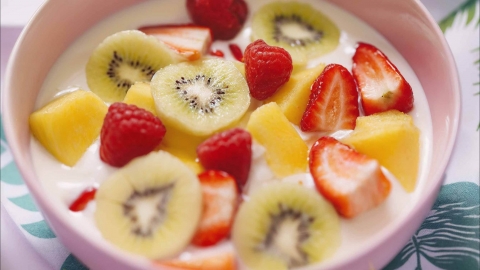What is the difference between cooling fruits and cold fruits?
Generally speaking, the main differences between cooling and cold fruits include their potency, suitable populations, common types, application scenarios, and dietary contraindications. A detailed analysis is as follows:
1. Potency
Cooling fruits have a milder cooling effect and are relatively mild in nature, causing less damage to the body's yang energy. Cold fruits have a stronger cold nature and a more significant effect in clearing heat and reducing fire symptoms. However, excessive consumption may easily damage the yang energy of the spleen and stomach, leading to physical discomfort.
2. Suitable Populations
Cooling fruits are suitable for individuals with a relatively hot body constitution or those prone to excessive internal heat, such as people experiencing symptoms like dry mouth and throat or constipation. Moderate consumption can help alleviate internal heat. Cold fruits are more suitable for individuals with severe internal heat symptoms, such as high fever, mouth ulcers, or sore throat. However, individuals with a cold body constitution or weak spleen and stomach should consume them cautiously.

3. Common Types
Common cooling fruits include pears, apples, grapes, strawberries, and oranges. Cold fruits include watermelons, bananas, persimmons, pomelos, kiwifruits, and dragon fruits, which have a more pronounced cooling effect.
4. Application Scenarios
Cooling fruits can be consumed moderately as common daily fruits, especially in hot weather, helping to relieve heat and prevent gastrointestinal discomfort. Cold fruits are better suited for short-term consumption when there are obvious heat symptoms in the body, such as during summer heatstroke or severe excessive internal heat, to quickly reduce heat. However, they should not be consumed for a long duration or in large quantities.
5. Dietary Contraindications
Although cooling fruits are mild in nature, excessive consumption by individuals with a cold constitution may cause symptoms such as bloating or diarrhea. Cold fruits have more dietary contraindications; individuals with a weak spleen and stomach or diarrhea may experience worsening symptoms after consumption. Women should also avoid excessive consumption during menstruation to prevent dysmenorrhea or menstrual blockage.
In daily life, when choosing fruits, one should consider their own body constitution and health condition, avoiding blind following of trends. Individuals with a cold constitution can consume small amounts of cooling fruits but should minimize consumption of cold fruits. Individuals with a hot constitution also need to control their intake to avoid damaging the spleen and stomach. If discomfort such as abdominal pain or diarrhea occurs after consumption, intake should be stopped promptly, dietary adjustments made, and medical advice sought if necessary.







